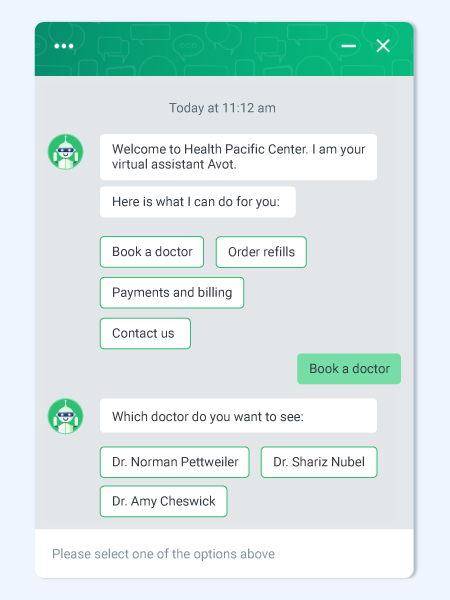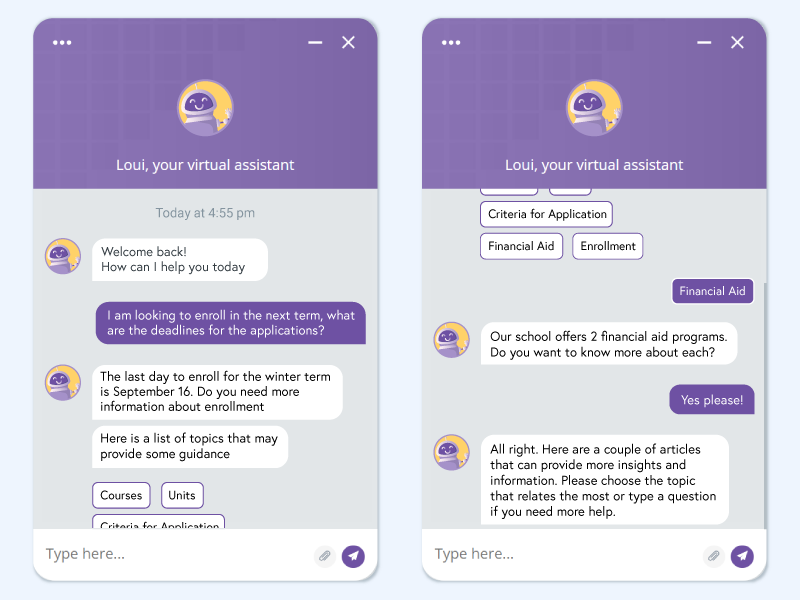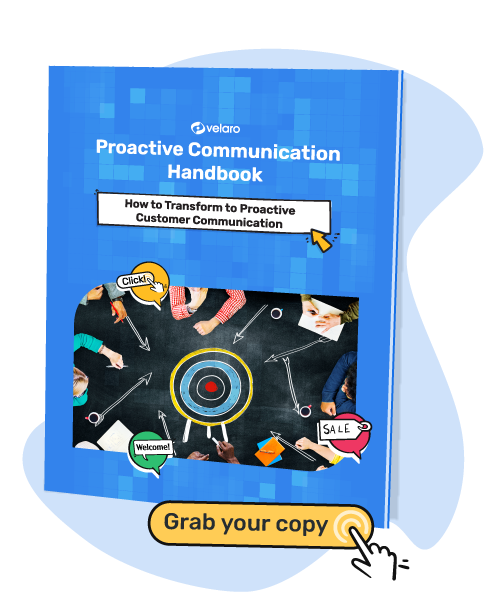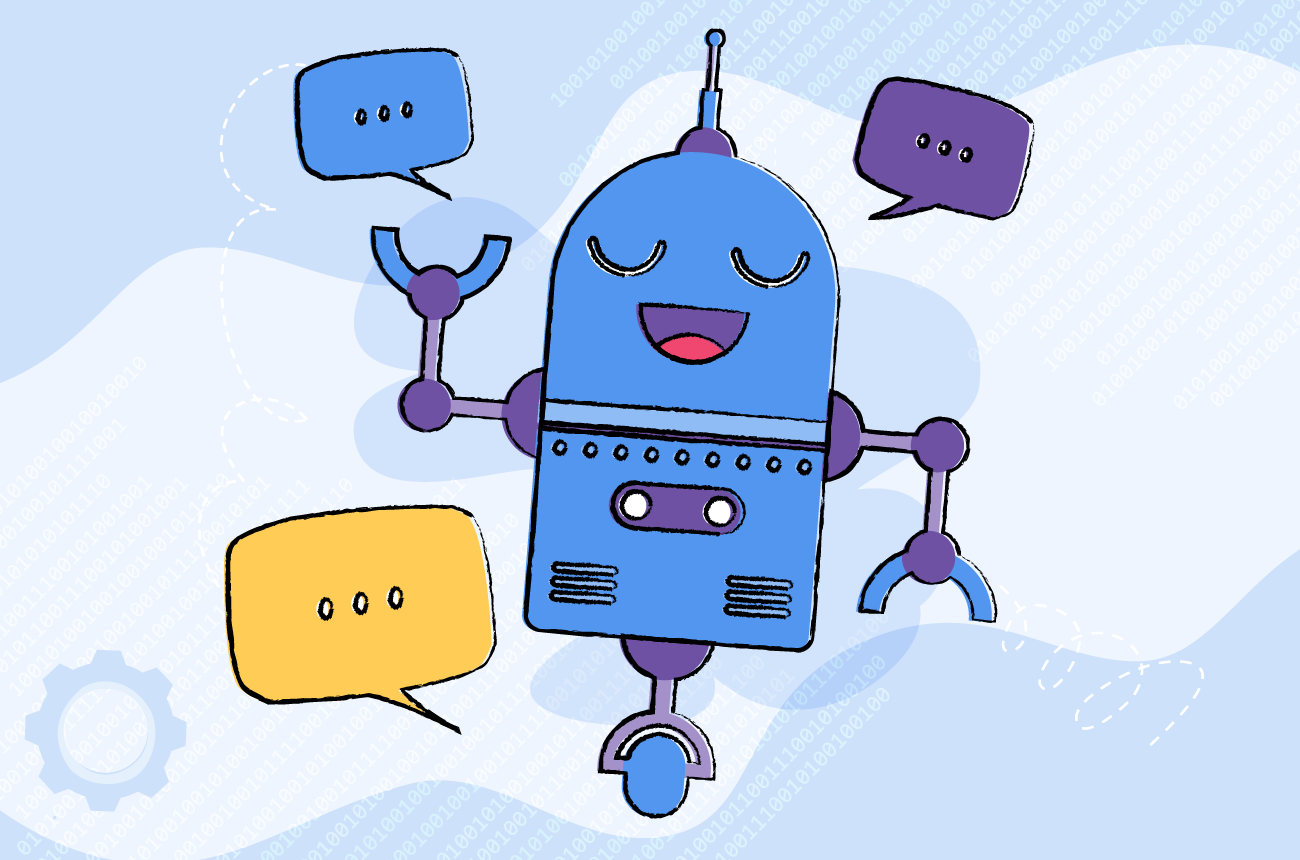New tech disrupts industries at breakneck speed, and chatbots are no exception.
Chatbots are revolutionary and can provide brands with a new way to engage their customers and strengthen loyalty. Deploying chatbots on multiple channels can meet your customer service requirements.
We’ve seen many chatbots take shape over the past couple of years, but with so many out there, it can be hard to know which one will fit your business and help you grow your audience.
Key takeaway:
- There’s no one-size-fits-all chatbot solution.
- Each bot is designed for a specific use case.
- It's essential to know the type of chatbot you want to deploy and the type of business you want to target.
What is a chatbot?
Chatbots are software programs imitating human-like discussions with users via text or voice interactions. They act as digital assistants who are well-versed in human capabilities, understand user intent, react quickly to concerns, and provide solutions.
Chatbots enable you to engage customers quickly with personalized content. You can also develop unique chatbots for each web page or audience segment based on their demographics, location, information consumed, and position in the customer lifecycle.
40% of users worldwide prefer dealing with chatbots over live chat agents.
Source: Insider Intelligence
Benefits of chatbots
Chatbots are a vital tool for building excellent customer experiences. They help you achieve marketing goals, boost sales, and scale customer support in various ways.
- Increase customer engagement with personalization: There is no better opportunity to strike up a dialogue than when a buyer is browsing your website. Chatbots help companies enhance user engagement by interacting with visitors with custom conversations. They can distinguish users and provide personalized experiences via first-party user data.
- Eliminate tedious, time-consuming tasks: No one enjoys monotonous tasks. Bots now aid in automating jobs that have to be done regularly. This lets teams save resources and be more productive.
- Provide 24/7 customer service: Chatbots don’t demand rest, unlike your support team. Your business can help a consumer, even after hours. This increases customer satisfaction since users can get help without waiting for a response.
- Improve lead generation: Bots are an excellent tool for increasing lead generation by helping you catch your prospect’s attention engagingly and uniquely on any channel, including web ads, landing pages, your websites, messaging apps, and social networking sites.
Core chatbot tech
Decision tree: An "If this, then that" structure that directs the consumer through a set of pre-defined scripts and alternatives.
Natural Language Processing (NLP): Artificial intelligence (AI) subset that assesses natural human language helping chatbots to understand conversational dialogues, identify intent, and offer contextually appropriate replies.
Machine Learning (ML): Algorithms that educate a chatbot on how to "learn" concepts from data without first being explicitly programmed.
Sentiment analysis: An automated approach that allows a chatbot to amass language clues from discussions to assess a user's mood and sentiments and appropriately change replies.
Types of chatbots
While the potential advantages of chatbot tech are great, adopting them is not simple. The abilities and prices of chatbots differ. So how much you benefit from them is primarily defined by choosing the most suitable one for your business. To use these services, you must first understand the most common chatbot types and how they can benefit you.
1. Rule-based chatbots
Rule-based chatbots, also known as decision-tree-based chatbots, interact by offering preconceived responses. They respond to queries by employing pre-defined rules and criteria to guide dialogue flow, providing users with a conditional if/then at each stage.

These chatbots provide precise and targeted responses to user queries and necessitate a detailed review of prior customer questions and data. Once the FAQs are identified, decision tree bots slowly restrict each dialogue until the user is happy with their reply. If the user is unsatisfied with the service, the bots will direct them to a live chat.
There are two types of rules-based chatbots: button-based and scripted bots. Button-based chatbots are also known as menu-based bots or menu-driven navigation. Menu bots allow users to follow a conversational path by selecting the chatbot's limited amount of buttons. Users are not permitted to input their inquiries or questions; instead, they must pick from the given buttons.
These bots have a primed knowledge base, with queries offered to the user in the form of buttons. Although these chatbots are sufficient for answering FAQs, they can fail to perform in more complex cases.

Scripted chatbots, often known as quick reply bots, are the most straightforward type of chatbot. These bots employ pre-defined replies to respond to specific questions or instructions.
The chatbot uses pre-programmed scripts and prompts to urge consumers to produce the inputs required to generate a response, or they will have users select from a list of possibilities rather than freely typing.
These bots are limited but are economical and simple to use. They're often used in general customer service tasks, such as answering FAQs, solving common inquiries before routing to a live agent, and automating data entry forms.
Pros of rule-based chatbots
- These bots are easier to build and less expensive.
- Offers seamless transfer to a human agent.
- These bots are best for increasing website lead capture.
- These are simple to integrate with back-end systems such as CRM for capturing user data or during e-commerce transactions.
- Easily guides the user through the conversation flow and provides a self-serve system.
- Can include interactive elements and media in the dialogue flow.
Cons of rule-based chatbots
- There is a lack of personalization for each user.
- These bots can’t comprehend human dialogue.
- These bots require a constant intervention of a human agent for complex dialogue flows.
- Only suitable for pre-defined outcomes.
2. AI chatbots
AI chatbots, also known as contextual chatbots or conversational AI chatbots, can comprehend the context of dialogue and interpret the proper meaning of a customer query. They are developed with newer technologies such as NLP, natural language understanding (NLU), ML, and AI.
These technologies help them understand user intent and temperament to give dynamic and fluid answers. They can retain prior exchanges and use that data to stay relevant while engaging with repeat customers.
Furthermore, it can store user intent data to provide a more personalized customer experience. This first-party data is collected across multiple platforms and channels and assures that the interaction fits the customer's needs at every touchpoint.

AI chatbots for business are integrated into a website's or app's core database, often a CRM system or a customer data platform (CDP). This allows them to acquire essential user details, such as their name, address, or past purchase history.
Pros of AI chatbots
- AI-powered chatbots can respond to more complex queries.
- These bots can easily integrate with a wide range of internal and external business applications.
- Continuously improves by retaining past conversations and personalizations.
- Intelligent chatbots are easier to scale.
Cons of AI chatbots
- Inadequately trained chatbots have low accuracy.
- Developing AI bots can be expensive if done from scratch.
3. Hybrid chatbots
The hybrid paradigm blends the best of three: the simplicity of rule-based bots, the sophisticated powers of AI chatbots, and human empathy. This offers a versatile strategy in which basic bots can handle FAQs, more complex questions use AI, and others get human interaction.
Hybrid chat assistants don’t affect the agent's duties or the customer response process. The hybrid bot, which combines rule-based and AI elements, will function as a new virtual agent that handles queries it can address and forward multilayered challenging questions to live chat agents.
Hybrid bots are suitable if your business is vast and has an extensive customer database. Due to the complexities inherent in setting up a hybrid chatbot, this technology will best serve the demands of large corporations. However, for emerging businesses that receive a limited number of simple queries, there is no need to invest so much time and money in the hybrid bot.
Keyword recognition-based chatbot is a hybrid bot that uses NLP to understand user input and answer appropriately. They are valuable for websites since they allow visitors to key in their questions and receive a speedy answer. The conversational flow is natural, which boosts customer satisfaction. It's also common to encounter bots that combine keyword recognition and button-based navigation to obtain the powers of both.
Pros of hybrid chatbots
- Fully promotes conversational marketing.
- Live-agent transition is seamless in these bots.
- They can easily handle frequently asked questions and recurring inquiries.
- Comprehends consumer queries irrespective of phrases used.
- Bots can perform actions like booking appointments or pushing and retrieving data from integrated apps and external servers.
Cons of hybrid chatbots
- Hybrid bots are less powerful than AI chatbots.
- These chatbots need constant surveillance and maintenance.
How to choose the best chatbot for your business
With so many chatbot types available, narrowing your options and selecting the best one can be challenging. However, there are a few approaches to picking chatbots that work best for your business purposes.
Define your objectives
Start with defining your business goals and identifying your chatbot's objectives and functions. Look into the potential of your chat assistant and ways to improve the conversational experience while establishing your goals.
Consider the tasks chatbots will handle by answering the following questions:
- What is the primary purpose of building a chatbot? Is it for lead gen, promotion, or customer support?
- What is the demographic of your intended audience? Are they new visitors, returning visitors, or both?
- What hours do you want to provide support chatbots? Will it be 24/7 support or at specific hours or specific days?
- Which tasks will they need help with?
Think about your target audience
To design a successful chatbot, you must first evaluate the intended audience's behavior and expectations. Determine your user base and the bot's usefulness for the target group. It's vital to remember that the chatbot must act as a liaison between your business and your customers, and it should understand their preferences and cater to their needs.
Define your value proposition
The value proposition entails ensuring that the most critical element of your organization is given precedence. A greater value proposition could require AI or ML capacities; hence, assess and decide your statement before selecting the ideal chatbot that meets your budget and company goals.
Evaluate features and functionalities
Thorough evaluation helps identify features vital for the chatbot to keep your processes running efficiently. For starters, you can establish guidelines to assess all solutions. Consider critical elements, such as the need for AI, integrations, monitoring, etc.
Use the correct type of chatbot
Each business is unique on its own. Therefore, selecting the correct type of chatbot is critical to engage customers effectively. Chatbots can be categorized into two types: bots that use AI technology and bots that don't.
Rules-based chatbots are an excellent option for simple business goals. AI-enabled chatbots and hybrid bots are ideal for companies that want AI capabilities. For example, you can program a chat assistant to create a sales quote with a rules-based dialogue. If the customer is dissatisfied, has complex questions, or needs more help, the AI can take over even before the chat transfers to a human.
Think about your budget
Like most enterprise applications, the project's size and scope drive the price of a chatbot. These parameters control the work necessary to develop your automated assistant and the effort to keep it functioning.
Chatbots don't have fixed prices because each is unique, with different project demands and commercial requirements. Bot technology can range in price from $0 to $1,000 per month or more, depending on what you configure them to accomplish.
Determine your availability
Customers continue to favor human agents for many issues. This is particularly true when dealing with vital, complex, or time-sensitive concerns. A well-chosen chatbot can help avoid delays and offer seamless chat transfer to a human agent.
They are also helpful in attending to customer requests after regular hours when no agents are available by offering support such as collecting a customer’s request via email or a form, creating a ticket, scheduling a call, etc.

Tip: You risk losing business if your chatbot can’t transfer chats, generate tickets, or promptly divert to an agent. To make this happen, integrate your chatbot into your live chat system with Velaro.
Find your perfect bot
Chatbots are integral to regular business operations, helping streamline internal and external processes. Although several chatbots suit various goals, selecting one can be difficult.
Simple chatbots employ a basic rules-based system to respond to consumer concerns. More elaborate approaches rely on AI technology to react effectively to a customer's specific context.
Smaller businesses can benefit massively from basic chatbots. It can collect data, resolve issues 24/7, and offer a better customer experience.
It's usually a good idea to test various chatbot types for your brand before committing to one.






